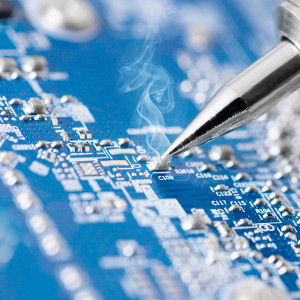Are happy days here again for American manufacturing? Optimists say yes: High global shipping costs, rising Chinese wages and a domestic shale gas boom are bringing appliance manufacturing back to Kentucky, creating automotive jobs in Tennessee and South Carolina, and leading an American competitive resurgence in a broad swath of industries.
President Obama built on this narrative in his State of the Union Address earlier this year when he noted that U.S. manufacturers have added almost 800,000 new jobs since 2010, and more than half of manufacturing executives have said they’re actively looking to bring jobs back from China.
Unfortunately, this apparent manufacturing renaissance is a chimera. Its champions are torturing the data and drawing the dangerous conclusion that merely staying the course will result in sustainable manufacturing growth. That is flat-out wrong.
The reality is that manufacturing in America is still on a very shaky footing. The widely celebrated four years of growth since 2010 have been shallow at best. They have been driven by Americans being able to buy more instead of by Americans getting better at making things.
The core problems that led to the mass exodus of American manufacturing jobs in the 2000s have still not been fixed. In fact, the jobs being added reflect little more than a cyclical upswing—they are merely replacing positions that were eliminated during the recession. And contrary to well-publicized anecdotes about individual companies reshoring jobs from China and other low-cost competitors, the truth is we still have just as many manufacturing jobs moving overseas as coming back.
Those trends reflect a profound underlying problem: We are producing far less than we did just a few years ago. Real value-added output—the best measure of what American factories actually produce—is down 3.2 percent since 2007, and we have 1.7 million fewer jobs and 15,000 fewer manufacturing establishments than we had then.
These are not just low-wage jobs at factories that produce cheap goods, but high-skilled jobs in technology-intensive industries. In other words, China is not just better at making Mardi Gras beads; it is replacing American production of computers, robots and microchips.
Manufacturing strength is essential to American prosperity. In addition to generating the exports necessary to lower the country’s trade deficit, manufacturing can provide high-paying jobs, giving workers good incomes to spend at local businesses such as restaurants and retailers.
Instead of looking past the challenges we face, U.S. manufacturing needs a serious competitiveness strategy that strengthens advanced industries with high potential for innovation and growth. It should be based on lowering costs for American companies and making sure they have the right resources and protection from market-distorting policies imposed by other countries. As the 114th Congress gets down to business and 2016 presidential hopefuls start debating how to secure America’s future prosperity, powering a true manufacturing renaissance should be near the top of the agenda.

